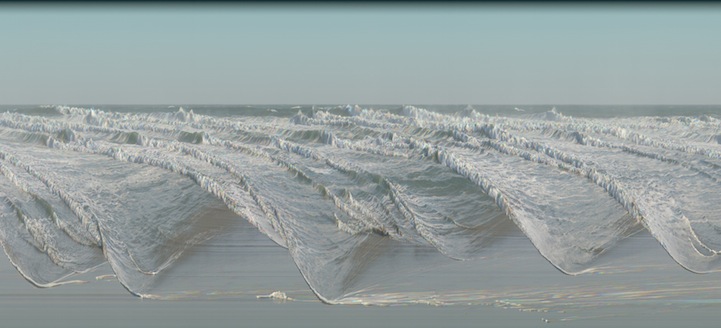
Normally, we record a moment in time with a photograph or a video, revealing specific spaces in time, but these abstract photographs by multifaceted artist Jay Mark Johnson takes a different approach. Using a slit camera, the photographer manages to capture both motion and time into each of his warped panoramic shots. Somehow, the technology is also able to separate the subject(s) from the background. Stationary architecture and immobile objects are transformed into streaks of color as moving subjects are distorted.
To get this effect, without the additional use of Photoshop or other sources outside of his $85,000 slit camera, Johnson kept his focus fixed in one position. Normally, for panoramic photos, a photographer would have to take several shots that pan across an area because the camera captures bits in vertical rectangular slivers and internally composites them into one wide image. By remaining still, the camera is forced to continually photograph the same area of space over a different course of time. So, essentially, as you browse the width of Johnson's images (left to right), you're viewing the passage of time, instead of space.
Johnson's unique series, known simply as SPACETIME, alludes to Albert Einstein's Special Theory that implies that space and time are not mutually exclusive, but rather relative to one another. According to said theory, it can be gathered that “as an object moves faster in relation to another object, its time in relation to that object slows down.” It's a complex method of perception, as abstractly depicted through Johnson's portfolio.




























































































